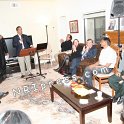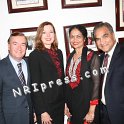 |
How does the NRI community celebrate New Year differently from the American New Year?
Los Angeles, January 01, 2012
Gary Singh/Raj/V.Pawar
A History of the New Year: Celebration Move from March to January:
In early Roman calendar March 1, is designated as the new year. The calendar had just ten months, beginning with March. The first time the new year was celebrated was on January 1st, was in Rome in 153 B.C. (In fact, the month of January did not even exist until around 700 B.C., when the second king of Rome.
The British and their American colonies adopted the reformed calendar after 1752, and before that, they celebrated the New Year in March. Southeast Asian calendars fall between APRIL 13-15. Sikhs celebrate Vaisakhi on the 13th April, and occasionally on 14th April. Bengalis celebrate New Year on the 1st of Boishakh between April 14–15. Assamese celebrate New Years between April 14–15. The Islamic New Year occurs on 1 Muharram. Since the Muslim calendar is based on 12 lunar months amounting to about 354 days, the Muslim New Year occurs about eleven days earlier each year in relation to the Gregorian calendar. The Indian New Year starts with the festival of lights called Diwali. Cards and gifts are exchanged and people finish off any uncompleted work.
New Year traditions & New Year Celebrations
Most people celebrate New Year's Eve on December 31 with their families and close friends at social gatherings, during which participants dance, eat, consume alcoholic beverages. Night long parties, fireworks, live musical performances and grand feast at every nook and corner of the country defines the festive mood of the people. A common tradition of the Americans is to hug and kiss each other when the clock strikes 12 in the midnight of December 31.
Government offices, public organizations, schools and many businesses are closed worldwide. New Year's Day is the closest thing to being the world's only truly global public holiday. You can ask questions about resolutions, late-night partying, fireworks, and the countdown to midnight, to name a few.
There are different ways to celebrate New Year in different cultures. In some parts of the world the traditions and way of celebration is similar, while in many parts it differs widely from one to the another.
Let us check out some interesting customs that NRIs follow during New Year celebration:
- 2-3 decades ago, First generation NRI community celebrated New Year's Eve on December 31, with their families and close friends in homes and rarely went to restaurants. At that time, the second generation children were at the age of 8-15 years, who followed their parents, played games as a group, ate Indian home made food and generally preferred 'PIZZA' if available unless they felt bored by them selves.
- For the past 10 years, Drastic Changes Have Come to the Life Styles of NRIs because first generation is getting older , and more focused on saving money at all times.
2a) New Year celebration in Indian Restaurants: Now the second generation- young adults are well qualified and have great financial support from their parents and now spend money the American Way. Hundreds of Indian restaurants in big cities are filled with young couples who enjoy New Years eve with Indian music/ DJ and Indian singers. The ticket s are sold from $200-$400 per couple to celebrate New Year’s day in these restauranrt.
2b) New Year celebration in Gurdwaras and Mandars; , the celebration generally begins an evening on December 31, which is more commonly known as the New Year’s Eve. NRI First generation, along with Second Generation visit the church and pray for their well-being before ringing in the New Year.
 CLICK PHOTS FOR BIGGER VIEW AND MORE PHOTOS CLICK PHOTS FOR BIGGER VIEW AND MORE PHOTOS
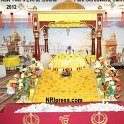 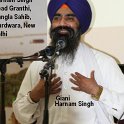 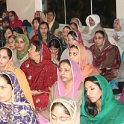 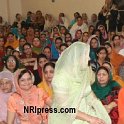 
Gurdwaras are filled with NRI community and serve free food (langars), and sweets from laddo, jalabis, samosas and pakoras. Interstingly you see all kind of community people (not necessarily Sikhs) enjoy food, and participate in prayers.
- Now in Modern Society, the celebration of the New Year, on January 1st is a relatively a new phenomenon.
Even on New Year's Day, the NRIs do not forget Economic Gloom, Rising Unemployment, and Falling Living Standards. They believe this country needs profound change, not small change and would like a hold on our economy and not cut back and squeeze living standards.
Interestingly , KV Kumar who is Chairman, Business & Strategic Consultants International, Inc invited 15-20 NRI families for dinner with Ed Royce at his residence in orange County.
A successful New Year dinner by K V Kumar and Viji
Yorba Linda, Jan 1, 2012
Ed Royce, a very enthusiastic gentleman and his wife arrived at Mr. and Mrs. K V Raj Kumar’s place in Yorba Linda to meet the NRI Community on Jan. 1, 2012 at 7pm. It was organized by Mr. and Mrs. K V Kumar. The evening began with a social gathering where guests were welcomed by Mr. and Mrs. Kumar. Various professional and successful business oriented people also attended the event from the Los Angeles area. At 8pm, Mr. Kumar shared some of his concerns about the present NRI issues and wish to take NRI concerns and problems to Congress. He also shared and praised Ed’s involvement in the community.

CLICK THIS PHOTO FOR BIGGER VIEW
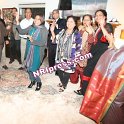 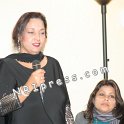   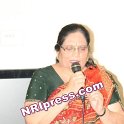
Ed Royce is running for U. S. Congress California’s 39th Congressional District. Born in Los Angeles, California, and graduating from Katella High School in Anaheim, Royce went on to earn his B.A. in Accounting and Finance in 1977 from the California State University, Fullerton. He was a Business Owner and Corporate Tax Manager for a Portland cement company before becoming a California State Senator in 1983, serving in that post until his election to the U.S. House of Representatives. Royce is married to the former Marie Porter.
Later in the evening, Mr. Kumar introduced Ed Royce. Ed thanked the audience and shared some of his concerns about the problems that NRIs are facing. At 9pm, Mr. Kumar thanked everyone and asked all to enjoy the Vegetarian Supper. It was a fun filled evening with north Indian musical hits. Ed Royce’ New Year Message was: Politics can make a difference
·

|











